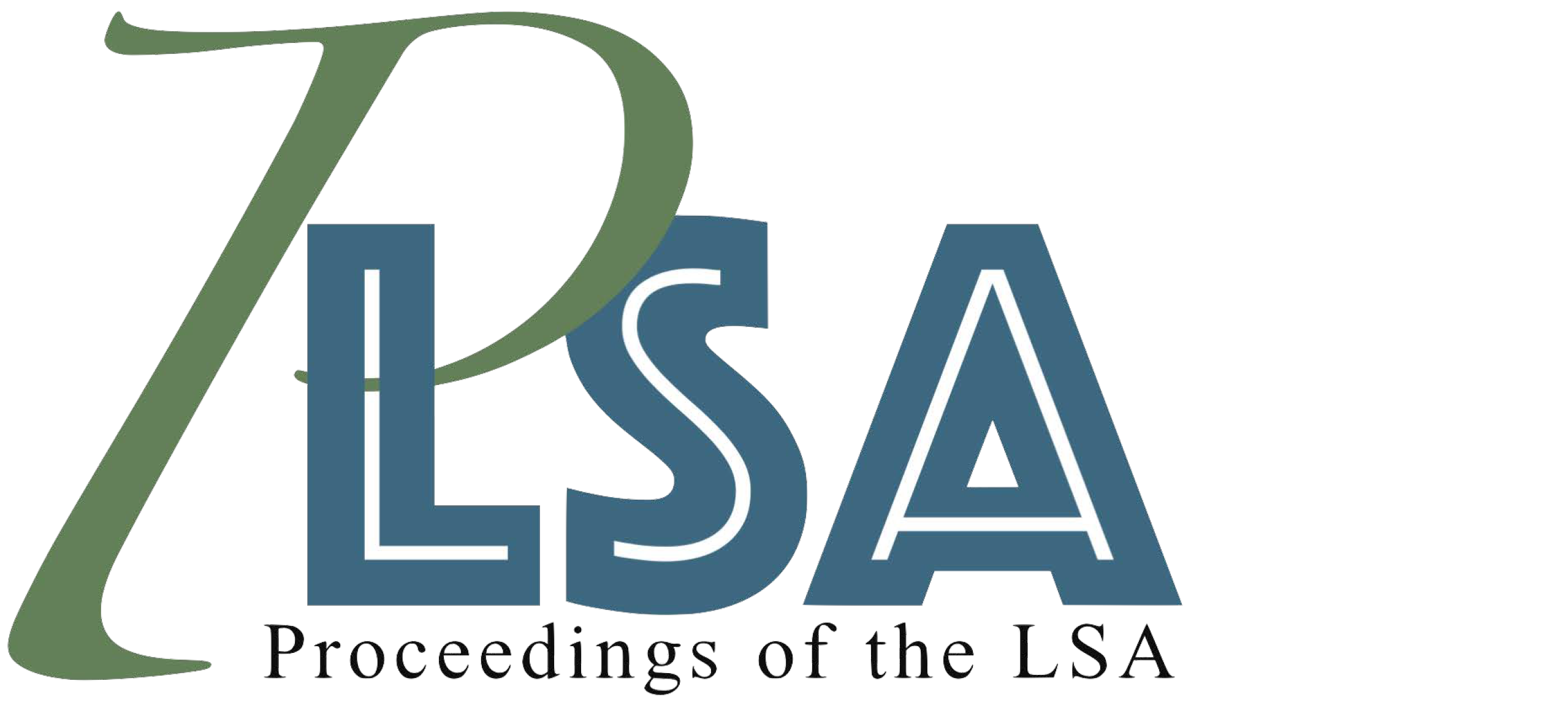Learning unaccusativity: Evidence for split intransitivity in child Spanish
DOI:
https://doi.org/10.3765/plsa.v8i1.5557Keywords:
language acquisition, Spanish, split intransitivity, unaccusativityAbstract
We examine four features of unaccusativity in child-directed and child Spanish to determine what cues children might use to distinguish unaccusative and unergative verbs. Two are cross-linguistic lexico-semantic features: Subjects of unaccusatives are patients so we expect more inanimate subjects with unaccusatives; and unaccusatives tend to have an endpoint, hence may occur more frequently with perfective aspect. The other two are language-specific morphosyntactic features: VS order is grammatical with unaccusatives but not unergatives, and many unaccusative verbs allow/require the anticausative se clitic. We find all four features robustly in children's input and that even 1-2-year-olds show discriminate use of them.
Downloads
Published
Issue
Section
License
Published by the LSA with permission of the author(s) under a CC BY 4.0 license.
